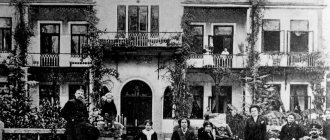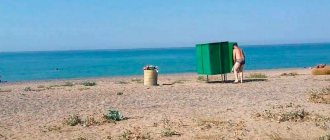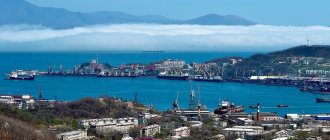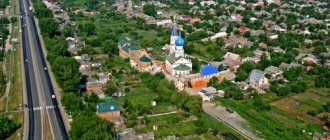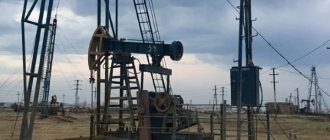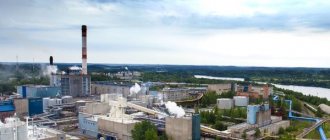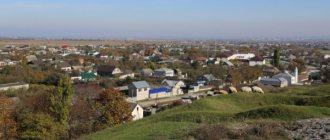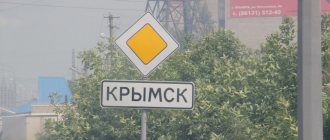For other places with the same name, see Fokino (localty).
City in Primorsky Krai, Russia
| Fokino Fokino | |
| City [1] | |
| Coat of arms | |
| Location of Fokino | |
| Fokino Location of Fokino Show map of Russia Fokino Fokino (Primorsky Krai) Show map of Primorsky Krai | |
| Coordinates: 42°58'N 132°24'E / 42.967°N W. 132.400° E. / 42.967; 132 400 Coordinates: 42°58'N 132°24'E. / 42.967 ° N W. 132.400° E. / 42.967; 132 400 | |
| A country | Russia |
| Federal subject | Primorsky Krai [1] |
| Based | October 4, 1980 |
| City status from | October 4, 1980 |
| Government | |
| • Chapter | Pavel Posvezhenny |
| Height | 40 m (130 ft) |
| Population (2010 Census) [2] | |
| • General | 23 696 |
| • Evaluate (2018) [3] | 23077 ( -2,6% ) |
| Administrative status | |
| • Subordinate | City of Fokino of regional subordination [1] |
| • Capital from | City of Fokino of regional subordination [1] |
| Municipal status | |
| • Urban district | Fokino urban district [4] |
| • Capital from | Fokino urban district [4] |
| Timezone | UTC+10 (MSK+7[5]) |
| Postal code [6] | 692880, 692881 |
| Dialing code(s) | +7 42339 |
| OKTMO ID | 05747000001 |
| Web site | adm.fokino-prime.ru |
Fokino
(Russian: Fokino) is a closed city in Primorsky Krai, Russia, located on the coast of Peter the Great Bay, on Abrek Bay, about 45 kilometers (28 mi) south of Vladivostok, the administrative center of the region. Population: 23,696 people (according to the 2010 census); [2] 26,457 (2002 census). [7]
Previously called Pacific
(until 1980),
Shkotovo-17
(until 1994).
History[edit]
The village of Promyslovka was founded on the site of present-day Fokino in 1891. Promyslovka received the status of an urban-type settlement in 1958, and in 1963 the neighboring naval settlement of Pacific Ocean followed suit. The villages grew together, were united and received city status. status October 4, 1980. [ link needed
] However, due to the fact that the city was a base for the Russian Pacific Fleet, the city was closed and officially called
Shkotovo-17
.
[ citation needed
] Since 1994, Fokino has been the official name of the city.
[ citation needed
]
After the 2012 APEC summit in Vladivostok, Fokino will become the main naval base in the Russian Far East, where the Russian Pacific Fleet will be sent.
Holidays in Fokino, Primorsky Krai 2021
Book a recreation center in Fokino!
Fokino is a small town in Primorye, 120 kilometers from Vladivostok. The city has a closed status and natural beauty, untouched by modern technology and industrial progress. The surroundings of this city are full of mountains, bays and lakes. The incredibly beautiful rocks, caves and waterfalls surrounding the city are very popular among travelers. Fokino is located in Peter the Great Bay, not far from the city there is a bay called Strelok. This area has fairly cool, humid summers but warm winters, with an average annual temperature of only 6.8 °C. The warmest month is August, with an average monthly temperature of 20.6°C, the coldest month is January, with an average temperature of −9.3°C. Thanks to the temperate climate, there are many tourists here at any time of the year.
Holidays in Fokino
Holidays in a young (by the standards of the Primorsky Territory) city are accompanied by comfort, beautiful natural monuments, the sea and a well-equipped green area. Everyone comes to the Primorsky Territory for something different: foreign tourists for the Russian flavor, city residents for tranquility, and lovers of active recreation for vivid impressions. The untouched nature reserve is a real find for lovers of rare plants and animals. Picturesque views open up to all lovers of photo hunting; this is facilitated by the local bays and picturesque taiga. Primorsky Krai is famous for its outdoor recreation. For unforgettable overnight stays, you can take advantage of numerous recreation centers and equipped camping sites. All tourists can also go on boat excursions. Not far from Fokino there are several picturesque islands, such as Five Fingers, Askold and Putyatina. These excursions typically offer photo sessions and diving lessons.
Holidays in Fokino in summer 2021
Clean mountain air and clear water make summer holidays in this place unforgettable. Tourists are offered fishing, hiking, hiking and camping. There are many beaches in the surrounding area to suit every taste. Sand, pebble and mixed beaches are an ideal place for a family holiday. Crystal clear water and the sound of the sea surf will allow the traveler to feel unity with nature. The beaches are absolutely clean; a massive flow of tourists has not yet reached them. You can stop both on equipped paid beaches and on numerous wild ones. Rest assured, you will not forget your summer holiday in Fokino for a long time and will want to return here as soon as possible.
Recreation centers in Fokino
Tourism [edit]
It is a closed city because the Russian Pacific Fleet is based there. Foreigners must have special permission to visit the city. However, the islands of Putyatin and Askold, which are part of the territory administered by the city, are open to tourists. Up to two thousand tourists visit Putyatin every year. They are attracted to the unique flora and fauna in the waters surrounding this island and its underwater landscape. Putyatin Island is inhabited by about 2,400 people. Their main occupation is catching and processing seafood, breeding mink and sika deer.
There is no permanent population on Askold. It is rarely visited by tourists due to the lack of regular transport links with the mainland and the status of the island, which until 1995 was part of a reserve where economic activity was prohibited. On Askold there are tens of tons of gold deposits.
Save Fokino: city residents came out in support of the radioactive waste processing center (PHOTO)
A picket in support of the creation of a Regional Radioactive Waste Conditioning Center (+18) was held on the square near the House of Officers of the Closed Administrative Unit of Fokino on Friday, January 18. Local residents and direct participants in service on nuclear submarines called on Primorye residents not to succumb to rumors and provocations, but to support the creation of a facility that will make Fokino and the entire Primorsky Territory environmentally friendly, PrimaMedia news agency reports.
About 150 activists - local residents of the closed city of Fokino gathered on Friday, January 18 at the House of Officers as part of a picket. Townspeople expressed bewilderment and dissatisfaction with the false information that is being disseminated regarding the Regional Center for Radioactive Waste Conditioning (RAW - editor's note) in the media and even in the deputy corps of the Primorsky Territory. Almost everyone who gathered at the picket in Fokino is in one way or another related to the nuclear submarine fleet and the process of processing radioactive waste. The organizers of the picket and those who came to support them directly participated in the acceptance of spent nuclear submarines, witnessed long-standing serious accidents, observed the processing of radioactive waste and saw the situation from the inside with their own eyes. They shared their opinion with the correspondent. IA PrimaMedia.
It's better to remove than to leave
We are confident that as a result of this work, all waste will be processed and leave our land,” Fokino residents say in the final resolution. Photo: Maria Borodina, PrimaMedia news agency
What was once done cannot be changed. But we must continue to fight this, and not stop working,” says Vyacheslav Ostrovsky, one of the organizers of the picket. Photo: Maria Borodina, PrimaMedia news agency
We are confident that as a result of this work, all waste will be processed and leave our land,” Fokino residents say in the final resolution. Photo: Maria Borodina, PrimaMedia news agency
We are confident that as a result of this work, all waste will be processed and leave our land,” Fokino residents say in the final resolution. Photo: Maria Borodina, PrimaMedia news agency
We are confident that as a result of this work, all waste will be processed and leave our land,” Fokino residents say in the final resolution. Photo: Maria Borodina, PrimaMedia news agency
We see how the environmental situation has improved thanks to DalRAO,” Fokino residents say in the final resolution. Photo: Maria Borodina, PrimaMedia news agency
1
/ 6
— The lack of understanding of the issue by many people, including journalists, is outrageous. What is being built is not a repository, but a complex of facilities for processing radioactive waste. Calls from unscrupulous politicians who play on the feelings of Primorye residents lead to false conclusions without knowledge of the situation. Let's be objective about what we have. Once again, someone is trying to put a black mark on the activities of Russia, our government, and DalRAO.
20 years ago Pavlovsk was filled with submarines. Before the formation of DalRAO, virtually no activity was carried out on the disposal of radioactive waste. Now the situation is completely different. During the organization’s work since 2000, three Chernobyl radioactive wastes have been removed. Just think about it. 43 trains with spent nuclear fuel, 157 radioisotope generators, 7,000 square meters of land. Safe storage of 69 three-compartment blocks from nuclear submarines was ensured, and 3.2 thousand cubic meters of liquid radioactive waste were processed. And we still have about 40,000 cubic meters of unprocessed solid nuclear waste. They need to be processed and brought into appropriate condition. What was once done cannot be changed. But we must continue to fight this, and not stop working.
As for Japan, it has been involved in the project for a long time. In 2012, it provided us with the Sakura DOK, two tugboats, and portal cranes. Japan itself is interested in a favorable environmental situation in our country, because we live on the shores of the same Sea of Japan.
In fact, with the launch of the Regional RW Conditioning Center, all acute issues in RW disposal in Primorye will be smoothed out. Of course, tasks and work will remain, life goes on. New waste will appear over time due to the existence of the nuclear fleet, but it will be in much smaller volumes. And they will be disposed of in a more civilized manner according to an already established, proven scheme,” says Vyacheslav Ostrovsky , one of the organizers of the picket, a resident of the closed administrative town of Fokino, a retired captain of the 1st rank, who served in the navy for more than 30 years, chairman of the committee of armed forces veterans, member of the Russian Geographical Society and author several books.
— All the figures mentioned by Vyacheslav Ostrovsky are beyond doubt. Those who served in Pavlovsk remember: the noise there was exorbitant, it was simply uneasy to go there. Today, the environmental situation in Primorye has improved, and the fact is that now we only have 40,000 cubic meters of solid radioactive waste left, and someone is preventing this. I think they are just pests and enemies. This is due to the poor awareness of all of us. We are not talking about the import of radioactive waste from abroad, but about the import of technologies here, to us, in order to dispose of the remaining radioactive waste and make our Primorye environmentally friendly.
People talk about cancer, heart disease. Yes, it is. But do you remember, for example, when the 431st took off? (The accident on the nuclear submarine K-431 in Chazhma Bay in 1985 became one of the largest radiation disasters - editor's note.) Here are the consequences. But now everything is leading to this stopping. I appeal to reason, not political games. We are talking about the disposal of the remaining solid radioactive waste, for this the state allocates money under the state program.
Initially, the issue of dismantling spent nuclear submarines was resolved simply, without understanding the situation. The boat was cut up, leaving three-compartment modules: a nuclear reactor and two adjacent compartments. All this was afloat. This was the first stage. The second stage was when these three-compartment modules turned into single-compartment ones. Two clean compartments were cut out, the nuclear reactors were pulled ashore and thus disposed of.
We are now moving to the third stage. Our task is to assemble everything, pack it and take it completely outside our territory,” says Anatoly Salin , chairman of the council of veteran submariners in the city of Fokino for 15 years, captain 1st rank, direct participant in service on nuclear submarines.
We are confident that as a result of this work, all waste will be processed and leave our land,” Fokino residents say in the final resolution. Photo: Maria Borodina, PrimaMedia news agency
says Anatoly Savin, chairman of the council of veteran submariners of the city of Fokino for 15 years. Photo: Maria Borodina, PrimaMedia news agency
We see how the environmental situation has improved thanks to DalRAO,” Fokino residents say in the final resolution. Photo: Maria Borodina, PrimaMedia news agency
We are confident that as a result of this work, all waste will be processed and leave our land,” Fokino residents say in the final resolution. Photo: Maria Borodina, PrimaMedia news agency
We are confident that as a result of this work, all waste will be processed and leave our land,” Fokino residents say in the final resolution. Photo: Maria Borodina, PrimaMedia news agency
We see how the environmental situation has improved thanks to DalRAO,” Fokino residents say in the final resolution. Photo: Maria Borodina, PrimaMedia news agency
1
/ 6
— I served in Pavlovsk for 26 years, quite a lot. For the last 9 years I have been the chief mechanical engineer of Pavlovsk. All boats, all reactors passed through my hands. You know, we then collaborated with the coastal technical base of the Navy: we reloaded nuclear fuel and operated nuclear reactors. But it is not typical for the fleet to deal with waste disposal. Thank God, good funding came and DalRAO came. It's just heaven and earth. For what they did, honor and glory to them. And don't bother them, please. Look, more funding will come. Before my eyes there was a development from nothing to what we have now. Of course, there was a serious accident in Chazhma. Its consequences will be felt for many years to come, but DalRAO itself and the processing of radioactive waste have nothing to do with the environment. There are only improvements, I can judge objectively. I have special education and extensive experience. No Japan, China or other countries have anything to do with the import of nuclear waste to us and cannot have one according to the Constitution,” says Alexander Maliy , a participant in the picket in support of the construction of the Regional RW Conditioning Center in the city of Fokino.
Reduce, neutralize, package and transport
No Japan, China or other countries have anything to do with the import of nuclear waste to us and cannot have according to the Constitution,” Ruslan Khotenko, director of the Fokino branch of DalRAO Exhibition Center.. Photo: Maria Borodina, PrimaMedia news agency
During the work of DalRAO in Fokino, work on the dismantlement of 69 nuclear submarines was completed. Photo: Maria Borodina, PrimaMedia news agency
The floating dock allows three-compartment blocks to be lifted from nuclear submarines for subsequent processing. Photo: Maria Borodina, PrimaMedia news agency
The Sakura crane is only part of the technical assistance that Japan provides to DalRAO with the aim of promptly recycling all existing waste. Photo: Maria Borodina, PrimaMedia news agency
ATL reactor compartments are specially treated and placed in long-term storage for 70 years. Photo: Maria Borodina, PrimaMedia news agency
DalRAO provides safe storage of three-compartment units from nuclear submarines. Photo: Maria Borodina, PrimaMedia news agency
DalRAO provides safe storage of three-compartment units from nuclear submarines. Photo: Maria Borodina, PrimaMedia news agency
1
/ 7
Experts directly working at DalRAO and in the field of radioactive waste disposal also tried to clarify the situation.
- Now we have storage facilities from the 60s and 70s, their service life is a maximum of 50-60 years and it is ending. The volumes of solid radioactive waste are very large, the storage facility is almost full. We just need to compact all this, bring it into an acceptable condition and transfer it to the national operator for final disposal and removal outside the region. For this purpose, the Regional Air Conditioning Center is being built. It will use new methods and equipment. In particular, dry and wet decontamination using special solutions and other means.
Currently, all unprocessed SRW is stored in containers and in underground storage facilities. Among them are radioactive metal, soil after the Chazhma accident, personal protective equipment, and parts of submarines. According to plans, we should build a regional center by 2020. From 2020-2021 we will begin the decontamination of contaminated soil and metal.
Now in Kamchatka two storage facilities are being cleaned out and transported here for further processing. Transportation of solid radioactive waste does not pose any risks to the population. Rumors about the import of solid radioactive waste from Japan are simply nonsense, because this is contrary to the law, says Ruslan Kotenko, director of the Fokino branch of DalRAO .
“Many journalists, including foreign ones, have already visited our facilities. Many walked around the area with a dosimeter and were surprised to note that the radiation level even in the center of Vladivostok was higher than at DalRAO facilities. Our ecologists are doing a great job monitoring the situation at RW processing sites. Everything is safe here.
The construction of the Regional RW Conditioning Center is currently being carried out by a Moscow contractor. New equipment will be used at the facility, the purchase of which will be financed by the Japanese side. The equipment will be ours, Russian, manufactured in the Tula region. Soon we plan to send some of DalRAO’s employees to retraining courses, because we still have to learn how to handle the new equipment. In total, the Regional Center will provide 115 additional jobs, which will be filled by our employees, as well as residents of Fokino,” says Igor Ponomarenko, Deputy Director for Administrative Activities of DalRAO.
— Simply removing existing solid radioactive waste from the region, as some citizens demand, means simultaneously contaminating associated structures. In addition, you need to understand that 40,000 cubic meters of solid radioactive waste is a lot. The main problem is that the activity of this waste is very low, and the volume is large. Processing at the Regional Center will reduce it by an average of 5-6 times. By the way, it would be more correct to call it not a center, but a workshop for the complex processing of solid radioactive waste. Moreover, only medium- and low-level waste of hazard class 3-4 with a half-life of up to 20 years will be processed there. Each individual type of SRW will be disposed of differently. The earth will be burned, metal structures will be treated with reagents, and some of the waste will be vitrified. After processing, solid radioactive waste will be packaged so that there are several safety barriers. The packaging will ensure the safety of waste during transportation even if it falls from a great height.
Next, all processed SRW will be sent to disposal sites outside Primorye, where they will be placed without the intention of being removed back. According to our legislation, all radioactive waste must be placed in final isolation. Accordingly, everything that is in Fokino must be processed and eventually sent for disposal outside the Far East. There is no need to fear that a nuclear burial ground will be built in Primorye. There are certain requirements for nuclear waste disposal sites; the choice of such an area must be justified with a perspective of not 100, but 200-300 years. Primorye is not even considered in this regard. In particular, due to the level of seismic activity and a number of other indicators,” shared Nikita Medyantsev, a representative of the national operator for radioactive waste management.
“We, the residents of Fokino, know that there has been radioactive waste on our territory for many years. We see how the environmental situation has improved thanks to DalRAO. We are confident that as a result of this work, all waste will be processed and leave our land,” says the resolution drawn up by local residents following the picket in Fokino on Friday, January 18.
RELATED LINKS:
Residents of Fokino rally over the construction of a nuclear center in Primorye
Construction of a Radioactive Waste Processing Center will improve the ecology of Primorye - WWF
Construction of a Radioactive Waste Processing Center will improve the ecology of Primorye - WWF
State Corporation "Rosatom": No radioactive waste will be imported to Primorye
Climate[edit]
| Climate data for Fokino | |||||||||||||
| Month | Jan | Feb | Mar | Apr | Maybe | Jun | Jul | Aug | Sep | October | But I | December | Year |
| Average high °C (°F) | -7,5 (18,5) | -4,4 (24,1) | 2,5 (36,5) | 9,8 (49,6) | 15,1 (59,2) | 17,6 (63,7) | 21,9 (71,4) | 24,1 (75,4) | 20,6 (69,1) | 14,0 (57,2) | 4,3 (39,7) | -4,0 (24,8) | 9,5 (49,1) |
| Daily average °C (°F) | -11,4 (11,5) | -8,5 (16,7) | -1,5 (29,3) | 5,5 (41,9) | 10,5 (50,9) | 14,2 (57,6) | 18,7 (65,7) | 21,0 (69,8) | 16,8 (62,2) | 9,8 (49,6) | 0,5 (32,9) | -7,8 (18,0) | 5,6 (42,2) |
| Average low °C (°F) | -15,2 (4,6) | -12,5 (9,5) | -5,5 (22,1) | 1,3 (34,3) | 6,0 (42,8) | 10,8 (51,4) | 15,5 (59,9) | 17,9 (64,2) | 13,1 (55,6) | 5,7 (42,3) | −3,2 (26,2) | -11,5 (11,3) | 1,9 (35,4) |
| Average precipitation, mm (inches) | 13 (0,5) | 16 (0,6) | 24 (0,9) | 47 (1,9) | 65 (2,6) | 90 (3,5) | 105 (4,1) | 139 (5,5) | 114 (4,5) | 62 (2,4) | 36 (1,4) | 20 (0,8) | 731 (28,7) |
| Source: Climate-Data.org [8] | |||||||||||||
Symptoms of the disease
The main signs of coronavirus infection include:
- debilitating dry cough;
- increased body temperature accompanied by chills;
- difficulty breathing and shortness of breath;
- headache;
- sore throat, difficulty swallowing;
- loss of smell and nasal congestion;
- digestive disorders - in rare cases;
- general weakness, increased fatigue.
In 80% of cases, coronavirus is mild or moderate, and its symptoms are similar to those of other acute respiratory diseases. In other cases, especially in the presence of concomitant chronic diseases, complications are possible in the form of bilateral pneumonia, requiring connection to a ventilator.
Links[edit]
Notes[edit]
- ^ abcde Law No. 161-КЗ
- ^ a b Federal State Statistics Service (2011). All-Russian Population Census 2010. Volume 1 [All-Russian Population Census 2010, vol. 1]. All-Russian Population Census 2010 [All-Russian Population Census 2010] (in Russian). Federal State Statistics Service.
- "26. The size of the permanent population of the Russian Federation by municipalities as of January 1, 2021". Federal State Statistics Service. Retrieved January 23, 2021.
- ^ abc Solution No. 384
- "On the Calculation of Time". Official Internet portal of legal information
. June 3, 2011. Retrieved January 19, 2021. - Post office. Information and computing center of OASU RPO. ( Post office
).
Search for postal service objects ( postal Search for objects
) (in Russian) - ↑
Federal State Statistics Service of Russia (May 21, 2004). The population of the Russian Federation as part of federal districts, urban settlements. [Population of Russia, its federal districts, constituent entities of the Federation, districts, urban settlements, rural settlements - administrative centers and rural settlements locations with a population of more than 3,000 people] (XLS). All-Russian Population Census of 2002 [All-Russian Population Census of 2002] (in Russian). - "Climate: Fokino". Retrieved March 24, 2021.
How is the virus transmitted?
The main route of infection is through close contact with an infected person. Infection occurs through airborne droplets when talking, sneezing or coughing. There is also a risk of infection when touching surfaces that contain the virus (telephones, handrails, door handles). If you touch your face or eyes immediately after tactile contact, there is still a risk of the virus entering the body through the mucous membranes. A possible route of infection is shaking hands, hugging or kissing when meeting.
Anyone can become infected, regardless of age. The categories of the population that are most susceptible to infection include the elderly, as well as patients suffering from chronic diseases. These are diabetes mellitus, severe cardiovascular pathologies, hypertension, and malignant tumors.
The incubation period for sick people can vary significantly. In most cases it lasts from 2 days to 2 weeks, but can last 20 days or more.


